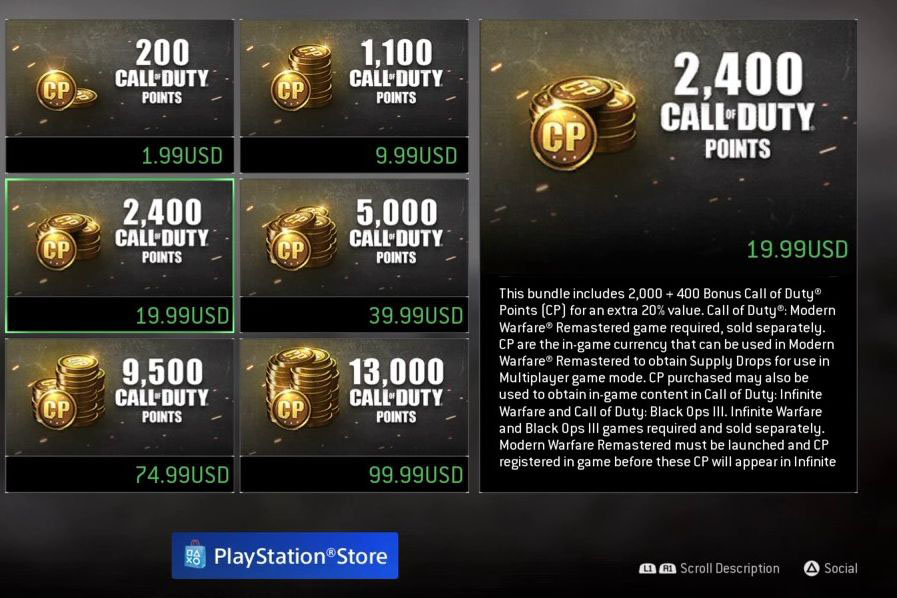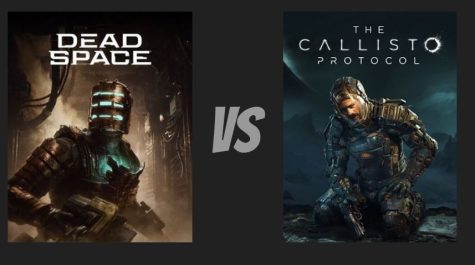Nickel and Dimed: Why Microtransactions Are Ruining Video Games
Microtransactions are being pushed far beyond the limits.
According to the fan website SWTOR Strategies, it would take about 188 days of playing time or $2,100 in order to unlock all the content in Star Wars Battlefront 2.
Microtransactions, a popular new business model where users can purchase virtual goods via small in-game purchases, is one of the most frustrating trends in gaming these days.
A recent lawsuit revealed that microtransactions in the popular Grand Theft Auto 5 Online have generated “at least” $500 million in revenue. It was later revealed by Daniel Ahmad, an analyst for Niko partners, that Grand Theft Auto 5 Online made an additional $200 million in revenue in the last six months.
Obviously, gaming is a business and no one should criticize a business for making a reasonable profit, but microtransactions are becoming excessive and taking much of the fun out of gaming.
According to a study by the NPD Group, 28% of gamers surveyed spent money on microtransactions or downloadable content in the past three months. Close to half of the non-purchasers of microtransactions said that they are not willing to spend money on them, 48% felt the content was not worth the extra expense and 16% believe the extra content should have been included in the full game price.
So, despite the best efforts of the gaming industry, the vast majority of gamers are resisting the trend toward microtransactions. Ultimately, gaming companies are reaping short-term benefits and costing themselves long-term fans as gamers shy away from games heavy with microtransactions.
Fortunately, there are still some developers make single player focused games without the need to soak up players money off in-game purchases. However, the trend toward microtransactions is ruining the gaming experience.
The trend began with smartphone games and has quickly accelerated into the console gaming world. It started in multiplayer games and has now infiltrated every corner of gaming.
The most recent situation is Star Wars Battlefront 2. Fans were infuriated with Electronic Arts for their liberal use of purchasable in-game items. These items provided a drastically different gameplay experience and an unfair advantage over players who didn’t purchase them.
Some characters like Darth Vader are not able to be purchased for money. Instead, players could purchase crystals, a different type of currency in-game than the credits, which can be used to purchase “loot crates” hoping that it would contain the item players want. The prices of the crystals range from $5 for 500 to $100 for 12,000 crystals.
Because of the unreasonable amount of play time players would have to put in to earn these items without paying, EA was practically forcing players to buy these “loot crates.” Fans responded in an overwhelmingly negative way and EA eventually caved to pressure and cut prices by 75%. Currently, characters such as Darth Vader are 15,000 credits instead of 60,000.
Call of Duty is another popular game that gets criticized for moving their business model more in the direction of microtransactions.
The retail price of Call of Duty is $60. However, the developers also offer a season pass which costs additional $50. Moreover, they are now pushing players to purchase supply drops with prices that range from $2 for 200 to $100 for 13,000 Call of Duty Points.
According to Activision earning report, 2016 was their best year ever, generating $6.61 billion. Microtransactions in games like Overwatch, Call of Duty, and the mobile phone game Candy Crush played a huge part in the $3.6 billion of revenue from in-game content, which was up 126% from 2015.
But as more games add microtransactions, the backlash among gamers is increasing. Eventually, the trend will drive gamers away from these games and hurt the companies in the long term.
Luckily, there are several solutions to this problem or at least a reduction to the issue.
Game companies could remove loot crates from games and allow gamers to purchase specific items directly instead of gambling on loot crates. Developers would still make a microtransaction profit, but it would be less frustrating to their customers.
Also, developers could reduce the time required to unlock new content. Not everyone wants to put in hours of playing time to unlock new in-game content. If developers could make the playing time required to earn items more reasonable, then more gamers would be satisfied.
And of course, developers could just get rid of microtransactions completely and put new content into season passes. The season pass business model has been around much longer than microtransactions and is much more accepted by the average gamer.
As a gamer, think carefully before making your next in-game purchase. The money you spend could shape the future of the video game industry for years to come.

My name is David Dubois and I'm a senior at Tyrone Area High School and this is my first year as part of the Eagle Eye staff. My hobbies and interests...













Gamers Elite • Jan 28, 2018 at 9:29 am
People keep complaining about microtransactions, but as someone else said, no one is forcing you to buy them.
“pushing players to purchase supply drops with prices that range from $2 for 200 to $100 for 13,000 Call of Duty Points.”
COD for example, has CPs, of course, they pretty much always have! But most of the time when you buy these points for supply drops, its just cosmetic items – not real guns.
Personally, I find that there is a big difference between loot crates for an Indie company and loot crates for a AAA company AND a big difference between loot crates that carry cosmetics and loot crates that carry game advantages.
Devin Phillips • Jan 24, 2018 at 1:31 pm
Hey lets not forget that Shadow of war had loot boxes and it was a single player game
christian ortiz • Jan 25, 2018 at 12:03 pm
never played it but hey i know a bunch of games like that
Noah • Jan 24, 2018 at 12:53 pm
Micro-transactions are optional. No-one forces you to buy them. I have tons of games and I’ve never paid for micro-transaction.
christian ortiz • Jan 24, 2018 at 12:07 pm
Fortnite another popular game uses these micro transactions but found an alternate way to earn them and not to just buy the credits, “V-Bucks” when you buy the $40 story mode where you can earn them in certain missions or quests you can complete. So really its all about how the game designers want the game to be, A fun game, or a game to only earn money for themselves.
Benedict DelBaggio • Jan 24, 2018 at 11:37 am
I agree, micro-transactions need to be toned down, at the very least have loot crates and transactions only for the cosmetics, and remove duplicates.